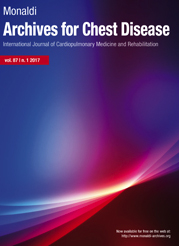A study of N-acetyltransferase 2 gene polymorphisms in the Indian population and its relationship with serum isoniazid concentrations in a cohort of tuberculosis patients
All claims expressed in this article are solely those of the authors and do not necessarily represent those of their affiliated organizations, or those of the publisher, the editors and the reviewers. Any product that may be evaluated in this article or claim that may be made by its manufacturer is not guaranteed or endorsed by the publisher.
Authors
The N-acetyltransferase 2 (NAT2) gene exhibits substantial genetic diversity, leading to distinct acetylator phenotypes among individuals. In this study, we determine NAT2 gene polymorphisms in tuberculosis (TB) patients and analyze serum isoniazid (INH) concentrations across the various genotypes. An observational prospective cohort study involving 217 patients with pulmonary or extrapulmonary TB was carried out. The NAT2 genotypes were identified using real-time polymerase chain reaction technology. INH concentrations at baseline and 2 hours post-dosing were estimated using high-performance liquid chromatography. The association between the acetylator status and INH concentrations was evaluated using odds ratios (OR) and the occurrence of adverse events across the different patient genotypes was also assessed. The genotype frequency of fast, intermediate, and slow acetylators was 7.37%, 39.17%, and 53.46%, respectively, while allele frequency was 27% for fast acetylators and 73% for slow acetylators. All the alleles followed the Hardy-Weinberg equilibrium. Patients with slow acetylator status had significantly increased serum INH concentrations 2 hours post-drug administration, followed by intermediate acetylators as compared to fast acetylators. 69 (31.8%) patients developed adverse drug reactions post-therapy. Patients with slow acetylator status had the highest (OR: 9.66) risk of developing drug-induced hepatoxicity, especially those with raised serum INH concentrations (OR: 1.34). Understanding the correlation between genetics and serum antitubercular drug levels in antitubercular drug-induced hepatotoxicity will provide valuable information to the medical community, minimizing the risk of adverse reactions and hospitalizations.
How to Cite

This work is licensed under a Creative Commons Attribution-NonCommercial 4.0 International License.






